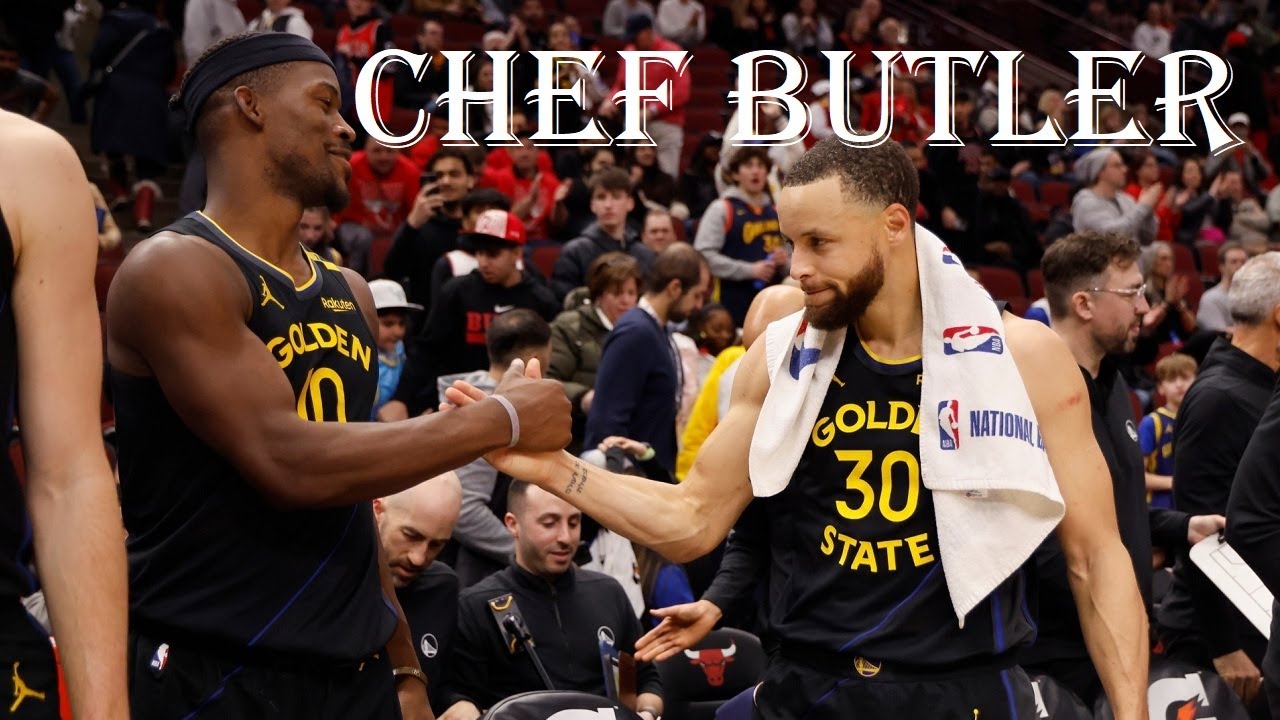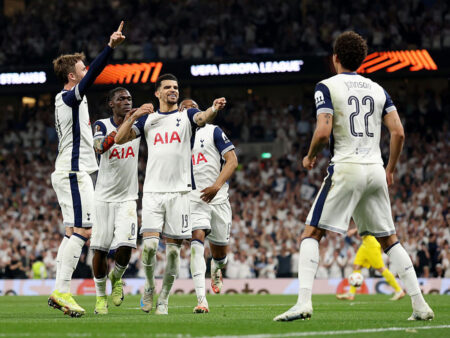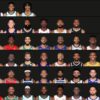
Ten years after initiating a dynasty with their inaugural championship, the Golden State Warriors appear to have been eclipsed by their Western Conference rivals. Current projections, such as those from ESPN BET, place them with only the seventh-best odds to clinch the West this season, trailing formidable teams like the reigning champion Oklahoma City Thunder, Denver Nuggets, Houston Rockets, Los Angeles Lakers, Minnesota Timberwolves, and LA Clippers.
This ranking isn`t entirely unfounded; last season, Golden State was the seventh seed and exited the playoffs in the second round after a five-game series. Furthermore, this upcoming season could see the Warriors field the oldest starting lineup in NBA history. Should Buddy Hield join Stephen Curry, Jimmy Butler III, Draymond Green, and Al Horford in the starting five post-December 17th, they would be the first team ever to start five players aged 33 or older, according to ESPN research.
However, such a swift, gloomy assessment significantly undervalues Golden State`s genuine capabilities. Despite their veteran status, the Warriors possess the attributes of one of the West`s most formidable teams, potentially even challenging the dominant Thunder. The league`s most recent back-to-back champions could emerge as an unexpected contender, preventing a new dynasty from repeating.

A Full Season with Curry and Butler
Projections from ESPN`s Kevin Pelton position the Warriors as the second-best team across the entire NBA, forecasting an impressive 56 wins—a standing closer to the top of the Western Conference than to the play-in tournament spots.
What accounts for this disparity between expert projections and the prevalent belief that the Warriors` championship window has closed? The straightforward answer lies in their performance: for half of last season with Jimmy Butler, the Warriors were among the league`s elite, and they further strengthened their roster during the offseason. By this reasoning, they are indeed poised to be contenders once more.
Golden State managed to upset the second-seeded Rockets in the first round and secured Game 1 against the Timberwolves before their momentum faltered due to Stephen Curry’s hamstring strain, sustained just 13 minutes into the series. There is no discredit in a playoff exit under such circumstances, as any top contender would predictably struggle without its premier player.
Yet, the quiet departure of the 2024-25 Warriors from the playoffs shouldn`t overshadow their remarkable mid-season turnaround. Before the Butler trade, Golden State held a 25-26 record with a negative net rating of minus-0.4. Post-Butler`s debut and through the remainder of the regular season, however, they led the league in defensive rating and ranked third in net rating, achieving a plus-9.2 per 100 possessions. Their 23-8 record during this period, which translates to a formidable 61 wins over a full season, was no mere coincidence.
With Curry fully recovered and Butler integrated for an entire season, there’s no indication that Golden State will perform worse this year. The Warriors are set to benefit immensely from exceptional continuity, with twelve of their top thirteen players from the 2024-25 postseason returning for the 2025-26 campaign. Moreover, they upgraded from their sole departure, Kevon Looney, by acquiring Al Horford, who joined them from the Boston Celtics in free agency.

Horford`s Impact
Horford`s integration into Golden State is pivotal, marking the first time Stephen Curry will play alongside a big man quite like the 39-year-old NBA champion. Among all Warriors centers since Curry`s breakthrough 2012-13 season, the leading totals for 3-point makes belong to Dario Saric (74 threes as a backup in 2023-24) and Quinten Post (73 as a rookie last season).
In stark contrast, Horford has consistently made over a hundred 3-pointers in each of the last three seasons, boasting a remarkable 40.9% from beyond the arc over that span. This percentage is the highest among all centers with at least 100 successful attempts, just narrowly surpassing Karl-Anthony Towns’ 40.8%. His exceptional ability to space the floor will provide crucial offensive balance, especially alongside Butler and Green, who can often be hesitant to shoot.
Beyond his shooting, Horford is a significantly superior defender and playmaker compared to Saric and Post, making him a more comprehensive fit for the Warriors’ scheme. The defensive potential of a frontcourt featuring Butler, Green, and Horford is immense, given their combined 15 All-Defensive Team selections throughout their careers.
Indeed, a robust defense is as integral to the Warriors’ championship identity as Curry’s signature deep 3-pointers. In their most recent title-winning season (2021-22), Golden State ranked second in defensive rating while their offense was a modest 16th. Last year, after Butler’s arrival, the team led the league in defensive rating—even without Horford, and despite opponents converting an unsustainably high percentage of their 3-point attempts.
A Well-Rounded Roster
Golden State is also expected to improve on the offensive end this season. In 2024-25, the offense functioned smoothly whenever Stephen Curry was on the court but struggled significantly when he rested. Lineups without either Curry or Butler were ranked in only the 5th percentile for offensive rating, according to Cleaning the Glass.
However, Butler’s presence provided stability to these units, ensuring that the Warriors maintained a solid offensive output as long as at least one of their star players was on the floor.
| Split | Net Rating |
|---|---|
| Curry on, Butler on | +7.0 |
| Curry on, Butler off | +5.4 |
| Curry off, Butler on | +12.8 |
| Curry off, Butler off | -7.0 |
Age and player availability, however, could complicate this strategy. Curry has missed an average of 15 games per season since nearly sitting out the entire 2019-20 campaign, while Butler has not met the 65-game threshold required for NBA awards since the 2018-19 season.
Consequently, the Warriors will likely face challenges when Curry is on the bench during games that Butler also misses. Jonathan Kuminga, who remains with the Warriors for now after a prolonged restricted free agency, could play a vital role as the primary scoring option during minutes without Curry or Butler. He notably averaged 24.3 points on 55% shooting in the team`s final four playoff games last season.
Alternatively, Kuminga could bolster the team`s prospects by facilitating a mid-season trade. As the only Warriors player with a cap hit between $12 million and $25 million this season, he represents the necessary matching salary to acquire another significant asset at the trade deadline.
For the moment, it remains unclear which specific position the Warriors might need to reinforce. As the season draws near, they possess an enviable blend of star power and bench depth.
Five distinct Warriors players—Curry, Butler, Green, Horford, and Brandin Podziemski—are ranked among the top 10% most impactful players in the league on a per-possession basis, according to the advanced xRAPM metric, which combines play-by-play and on/off data. Only the Thunder, Rockets, and Cleveland Cavaliers can boast more than three such highly impactful players.
Beyond this core quintet, the Warriors feature a diverse group of perimeter role players—including Hield, Kuminga, Gary Payton II, Moses Moody, and De’Anthony Melton—each offering various strengths. Additionally, Post and Trayce Jackson-Davis provide different options as big men off the bench. As Kevin Pelton observes in his projections, the Warriors “have 11 players who rate better than league average, tied with the Thunder for most of any team.”
The Rest of the West
Ultimately, the Warriors’ most significant challenge might not stem from their roster composition but rather from the formidable landscape of the Western Conference. The top tier of the West is considerably stronger now than it was in 2022, when Golden State navigated through injury-plagued Nuggets, Memphis Grizzlies, and Dallas Mavericks teams en route to the Finals.
Despite this intensified competition, every team in the conference—aside from Oklahoma City and Denver—still grapples with major issues. Fred VanVleet’s ACL tear is expected to significantly diminish Houston’s ceiling. Minnesota relies heavily on rapidly aging veterans (38-year-old Mike Conley and 33-year-old Rudy Gobert) and untested youngsters (Rob Dillingham and Terrence Shannon Jr.) to complement Anthony Edwards. The Lakers contend with a thin rotation and a potentially disastrous defense, already facing an injury to LeBron James. The Clippers face similar age-related concerns as the Warriors, compounded by the potential ramifications of the Kawhi Leonard/Aspiration investigation.
Even the Oklahoma City Thunder, who currently appear devoid of any minor or major concerns, could find themselves struggling to overcome Golden State in a potential playoff series. The Warriors have consistently provided tough competition for this iteration of the Thunder. Over the past two seasons, Golden State holds a 3-4 record against Oklahoma City; two of those losses went into overtime, and Stephen Curry was absent for two others. Furthermore, Jimmy Butler was not on the roster for any of these matchups.
While the Warriors would certainly not be favored to defeat the Thunder, and they would need to successfully navigate a perilous path—comprised of formidable opponents and their own aging roster challenges—to even secure that opportunity, it is not an entirely unrealistic prospect. At this juncture in their competitive timeline, merely having a chance is all the Warriors can truly aspire to.
With James Wiseman having departed and Jonathan Kuminga potentially on his way out, the Warriors’ “two timelines” strategy has effectively been abandoned. The focus now is entirely on the present, maximizing Stephen Curry’s remaining opportunities to augment his illustrious trophy collection.




